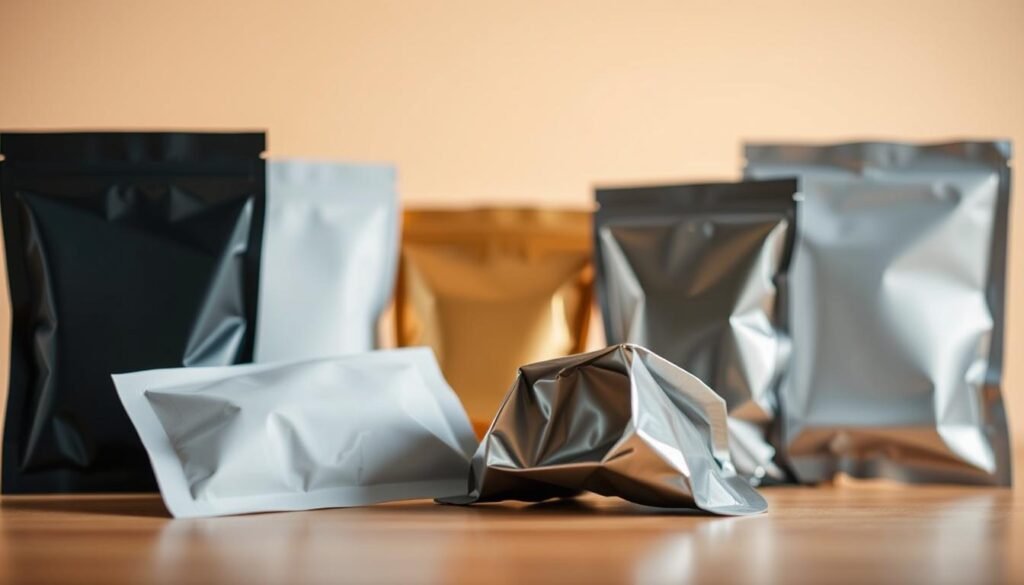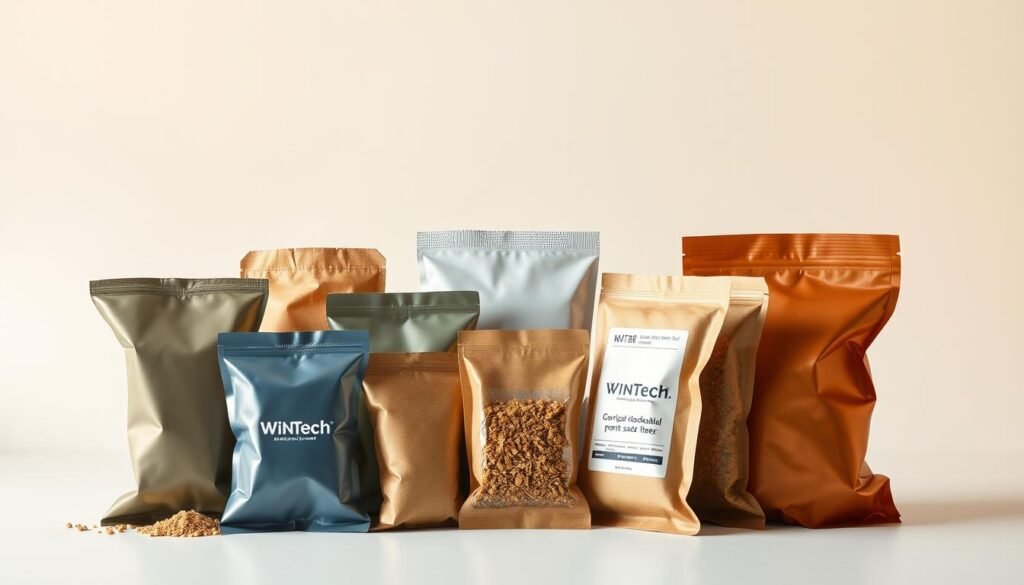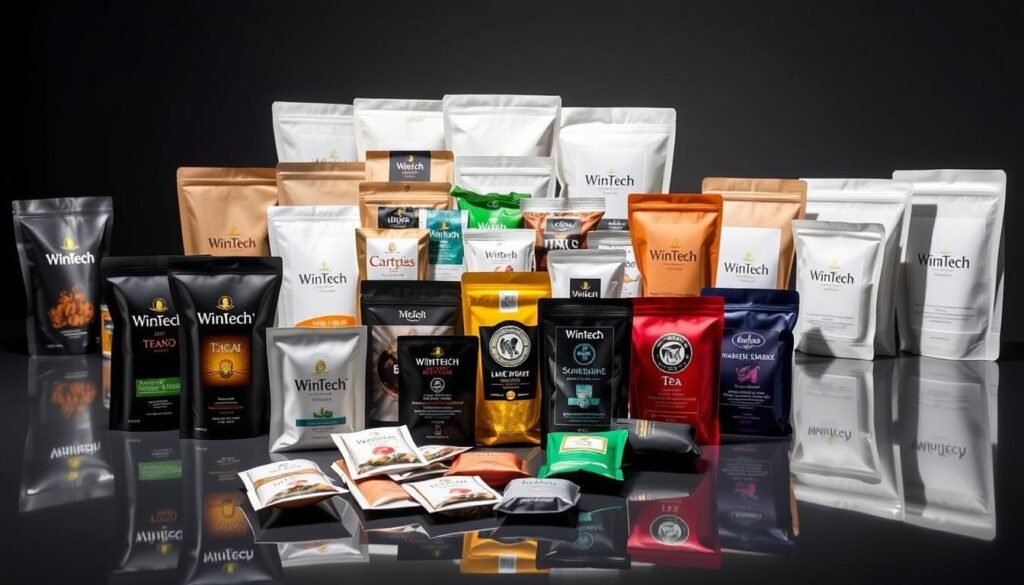Have you ever wondered how a tiny packet can revolutionize the way we consume food and beverages? What are sachets, and why are they becoming a game-changer in modern packaging? Sachets represent a compact, versatile solution that’s transforming how consumers experience single-serve products across the United States.
What are sachets exactly? These flexible, small-sized packaging solutions are designed to deliver precise amounts of products, ranging from powders and liquids to granules and gels. The sachets definition goes beyond mere packaging – they’re a strategic approach to convenience, portion control, and product preservation that meets the dynamic needs of today’s consumers.
What are sachets have evolved dramatically, offering innovative solutions for food and beverage brands. From instant coffee mixes to nutritional supplements, sachets provide an unparalleled combination of practicality and innovation that speaks directly to consumer demands for convenience and quality.
Key Takeaways of What are sachets
- Sachets offer precise, single-serve packaging solutions
- Versatile packaging format for multiple product types
- Enhances product convenience and portion control
- Supports brand innovation in packaging design
- Meets growing consumer demand for compact, efficient packaging
Understanding what are sachets in Packaging
Sachets have revolutionized the way food and beverage products are packaged and consumed. These small, lightweight containers offer a unique solution for single-use applications that meet modern consumer needs.

Packaging technology has transformed dramatically, with sachets emerging as a versatile and convenient option for businesses and consumers alike. When exploring how to use sachets, you’ll discover their incredible potential across multiple industries.
Definition and Purpose of Sachets
A sachet is a small, sealed package typically made from flexible materials designed to contain single-serve portions of products. These compact containers are perfect for:
- Preserving product freshness
- Providing portion-controlled servings
- Reducing packaging waste
- Offering convenient, on-the-go solutions
Historical Context of Sachets
Single-use sachets originated in the mid-20th century as manufacturers sought more efficient packaging methods. Originally developed for condiments and pharmaceutical products, they quickly expanded into various markets.
Benefits of Using Sachets in Food and Beverage
When comparing sachets vs packets, sachets offer unique advantages:
- Cost-effectiveness: Lower material and transportation expenses
- Product Protection: Superior barrier against moisture and contamination
- Consumer Convenience: Easy to carry, use, and dispose of
Your business can leverage these innovative packaging solutions to enhance product presentation and meet evolving consumer preferences.
Types of Sachets: what are sachets Made From?
Sachets have revolutionized packaging across multiple industries, offering compact and convenient solutions for various products. Understanding the materials used in what are sachets helps you appreciate their versatility and design complexity.

Manufacturers develop sachets using diverse materials tailored to specific product requirements. Your packaging choices depend on several critical factors, including product type, preservation needs, and environmental considerations.
Common Materials in Sachet Production
The most prevalent materials for creating sachets include:
- Flexible laminates
- Plastic films
- Aluminum foils
- Specialty papers
Innovative Materials Transforming Sachets
Recent technological advancements have expanded the potential of types of sachets. Cutting-edge materials now offer enhanced barrier properties, improved shelf life, and reduced environmental impact.
| Material Type | Key Characteristics | Primary Applications |
|---|---|---|
| Multi-layer Laminates | High moisture barrier | Food, pharmaceutical |
| Nano-composite Films | Exceptional strength | Beauty product sachets |
| Bio-based Polymers | Eco-friendly | Personal care, cosmetics |
Biodegradable Options in Sachets
Sustainability drives innovation in sachet materials. Bio-based and compostable options are gaining prominence, allowing brands to reduce environmental footprints while maintaining product integrity.
Your choice of sachet material can significantly impact product quality, consumer perception, and environmental responsibility. Select wisely to meet both functional and ecological requirements.
Applications of Sachets in Food and Beverage: what are sachets Used For?
Food sachets have revolutionized the way consumers experience convenience and packaging in the modern marketplace. These compact containers offer innovative solutions across multiple industries, transforming how products are presented, preserved, and consumed.

Sachets packaging provides remarkable versatility for brands seeking to maximize product appeal and functionality. From single-serve tea sachets to specialized food sachets, these compact containers deliver unique benefits that resonate with today’s consumer preferences.
Single-Serve Convenience
Consumers value quick, portable solutions that fit their fast-paced lifestyles. Sachets deliver precisely that by offering:
- Precise portion control
- Easy-to-carry packaging
- Minimal waste generation
- Quick preparation options
Flavor Preservation Techniques
Innovative sachet technologies ensure product quality remains exceptional. By protecting contents from external elements, sachets maintain:
- Original product aroma
- Consistent taste profiles
- Extended shelf life
- Protection from moisture and contamination
Marketing Advantages for Brands
Brands leverage sachets packaging as powerful marketing tools. These compact containers offer:
- Enhanced brand visibility
- Cost-effective sampling strategies
- Customizable design options
- Improved consumer engagement
By embracing food sachets and tea sachets, companies can create memorable product experiences that distinguish them in competitive markets.
Future Trends in what are sachets for Food and Beverage
The landscape of sachets packaging is rapidly evolving, driven by technological innovation and consumer demand for smarter, more sustainable solutions. As you explore the future of what are sachets, you’ll discover a world where packaging goes beyond simple containment to become an intelligent, environmentally conscious product experience.
Sustainability is now at the forefront of sachet design. Manufacturers are investing in eco-friendly materials that reduce environmental impact while maintaining product integrity. Biodegradable polymers and plant-based packaging solutions are transforming the traditional sachets definition, offering brands an opportunity to appeal to environmentally conscious consumers.
Sustainability Goals in Sachet Design
Smart packaging technologies are revolutionizing how we think about sachets. Advanced materials now incorporate sensors that can track freshness, monitor temperature, and even provide interactive experiences through smartphone integration. These innovations are not just about protecting products but creating engaging consumer interactions that extend the value of packaging.
High-Tech Innovations: The Future of What Are Sachets
Consumer preferences are driving significant changes in sachet development. People now expect packaging that is not only functional but also personalized, sustainable, and technologically advanced. Brands like Wintech Package are leading this transformation, developing sachets that meet diverse consumer needs while pushing the boundaries of packaging technology.
Consumer Preferences Shaping What Are Sachets
As you look ahead, the future of sachets promises more than just convenience—it represents a holistic approach to packaging that balances innovation, sustainability, and user experience. The next generation of sachets will be intelligent, adaptive, and aligned with global environmental goals.